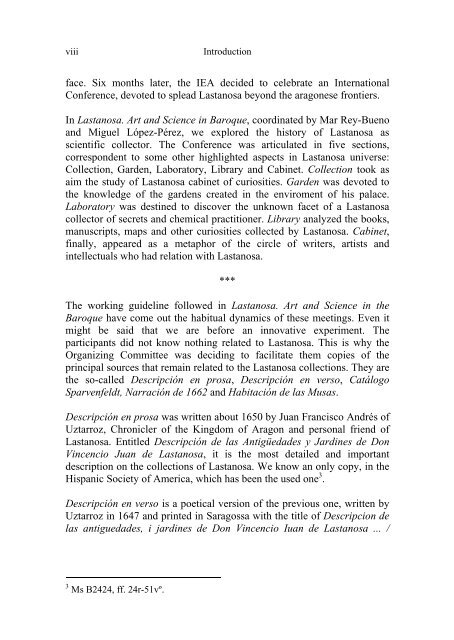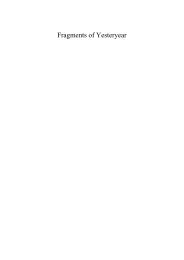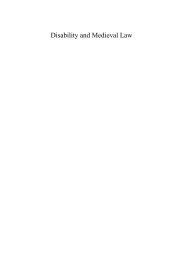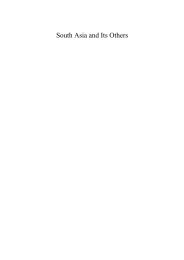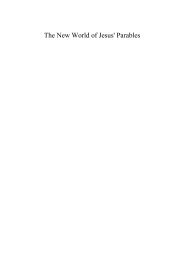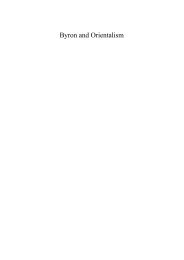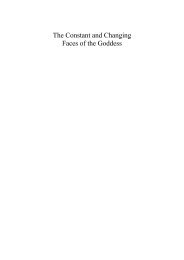The Gentleman, the Virtuoso, the Inquirer - Cambridge Scholars ...
The Gentleman, the Virtuoso, the Inquirer - Cambridge Scholars ...
The Gentleman, the Virtuoso, the Inquirer - Cambridge Scholars ...
You also want an ePaper? Increase the reach of your titles
YUMPU automatically turns print PDFs into web optimized ePapers that Google loves.
viii<br />
Introduction<br />
face. Six months later, <strong>the</strong> IEA decided to celebrate an International<br />
Conference, devoted to splead Lastanosa beyond <strong>the</strong> aragonese frontiers.<br />
In Lastanosa. Art and Science in Baroque, coordinated by Mar Rey-Bueno<br />
and Miguel López-Pérez, we explored <strong>the</strong> history of Lastanosa as<br />
scientific collector. <strong>The</strong> Conference was articulated in five sections,<br />
correspondent to some o<strong>the</strong>r highlighted aspects in Lastanosa universe:<br />
Collection, Garden, Laboratory, Library and Cabinet. Collection took as<br />
aim <strong>the</strong> study of Lastanosa cabinet of curiosities. Garden was devoted to<br />
<strong>the</strong> knowledge of <strong>the</strong> gardens created in <strong>the</strong> enviroment of his palace.<br />
Laboratory was destined to discover <strong>the</strong> unknown facet of a Lastanosa<br />
collector of secrets and chemical practitioner. Library analyzed <strong>the</strong> books,<br />
manuscripts, maps and o<strong>the</strong>r curiosities collected by Lastanosa. Cabinet,<br />
finally, appeared as a metaphor of <strong>the</strong> circle of writers, artists and<br />
intellectuals who had relation with Lastanosa.<br />
***<br />
<strong>The</strong> working guideline followed in Lastanosa. Art and Science in <strong>the</strong><br />
Baroque have come out <strong>the</strong> habitual dynamics of <strong>the</strong>se meetings. Even it<br />
might be said that we are before an innovative experiment. <strong>The</strong><br />
participants did not know nothing related to Lastanosa. This is why <strong>the</strong><br />
Organizing Committee was deciding to facilitate <strong>the</strong>m copies of <strong>the</strong><br />
principal sources that remain related to <strong>the</strong> Lastanosa collections. <strong>The</strong>y are<br />
<strong>the</strong> so-called Descripción en prosa, Descripción en verso, Catálogo<br />
Sparvenfeldt, Narración de 1662 and Habitación de las Musas.<br />
Descripción en prosa was written about 1650 by Juan Francisco Andrés of<br />
Uztarroz, Chronicler of <strong>the</strong> Kingdom of Aragon and personal friend of<br />
Lastanosa. Entitled Descripción de las Antigüedades y Jardines de Don<br />
Vincencio Juan de Lastanosa, it is <strong>the</strong> most detailed and important<br />
description on <strong>the</strong> collections of Lastanosa. We know an only copy, in <strong>the</strong><br />
Hispanic Society of America, which has been <strong>the</strong> used one 3 .<br />
Descripción en verso is a poetical version of <strong>the</strong> previous one, written by<br />
Uztarroz in 1647 and printed in Saragossa with <strong>the</strong> title of Descripcion de<br />
las antiguedades, i jardines de Don Vincencio Iuan de Lastanosa ... /<br />
3 Ms B2424, ff. 24r-51vº.


